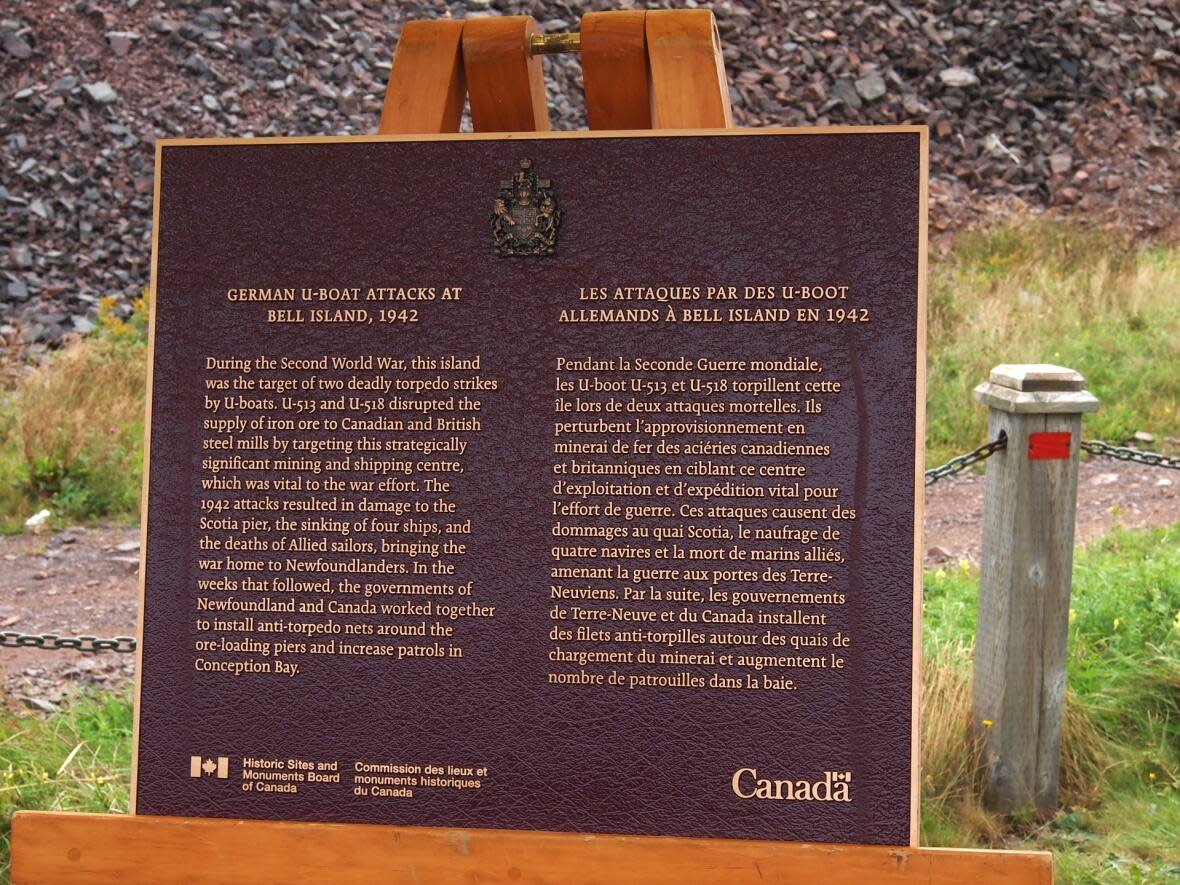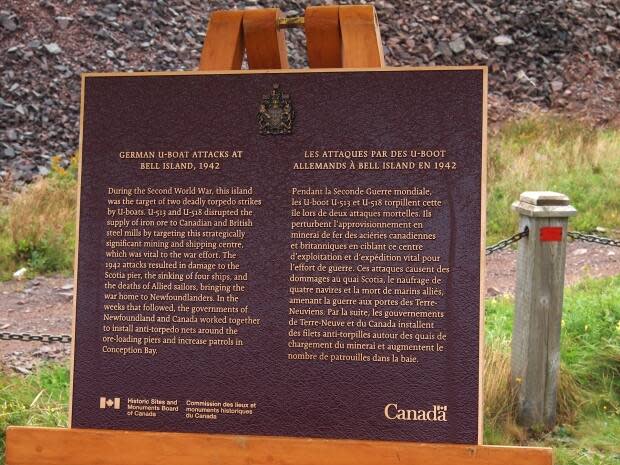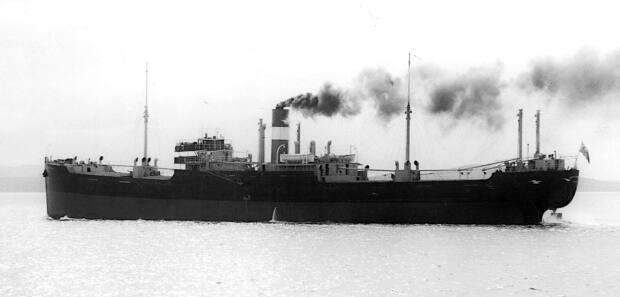Bell Island granted national historic significance on anniversary of World War II attacks


Bell Island has finally received national historic recognition some 80 years after the events of World War II.
Last week, to commemorate the anniversary of the oft-forgotten 1942 German U-boat attacks on iron-ore carriers on the island, a plaque was unveiled at the Bell Island Community Museum.
Bell Island was of strategic significance to the Allied war effort. Iron ore produced in Bell Island mines supplied steel mills, making it a high-value target.
The attacks, in September and November of 1942, were two of the few on North American soil during the war, and led to the sinking of four carriers: The SS Saganaga, the SS Lord Strathcona, the SS Rose Castle, and PLM 27.
Nearly 70 sailors lost their lives in the attacks.
Teresita McCarthy, executive director of the Bell Island Number 2 Mine and Community Museum, says efforts to be recognized got underway thanks to a tour guide, who was surprised how many in neighbouring communities were unaware of the battle.
"He was astounded by the fact that every time he'd mentioned that we were the only community in North America that saw enemy action, [visitors] were kind of gobsmacked," said McCarthy.
"They couldn't believe it. He was gobsmacked at the fact that this is our own history here in our own province, and our own local people did not know about it. So, he took it upon himself, and he applied to the historic sites and Monuments Board of Canada."

McCarthy says the tour guide submitted the proposal "four or five years ago," noting that the board was impressed with his submission, ultimately leading to the unveiling of the monument on the historic anniversary.
McCarthy's own family was on Bell Island during the attacks. Her mother, who was 17 at the time, would tell her stories as she grew up, including how both Teresita's father and grandfather helped in the rescue and recovery of those in the water.
"[They] were both among probably over 100 people who came down to bring the bodies and survivors into shore," said McCarthy. "My father couldn't swim, but my mother tells the story of him being up to his armpits bringing people in. It wasn't just the men. It was the men and women [helping the effort.] They were bringing them in as fast as they could."
Some 80 years later, McCarthy feels the recognition is bittersweet in many respects.
"It's incredible," said McCarthy. "It gives us national significance now, [which] will help us with our tourism industry. But, all of that means nothing to the fact that the people of Lance Cove, the souls who lost their lives, this is where the importance comes.
"I spoke [at the ceremony] and my closing comment was that I was confident that the people who lived this horrific experience in 1942 are smiling down on us because recognition has been given where it is most certainly due."
LISTEN | Teresita McCarthy discusses German U-boat attacks of 1942
Read more from CBC Newfoundland and Labrador


